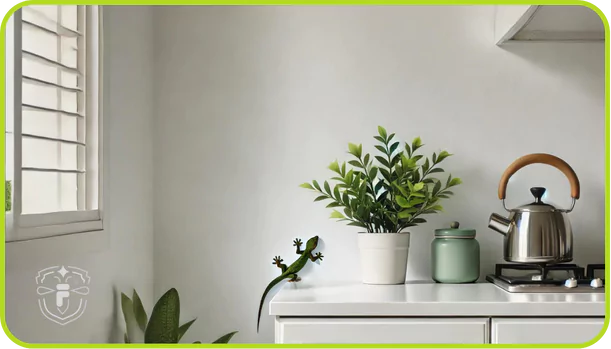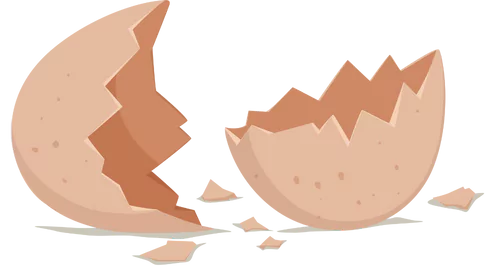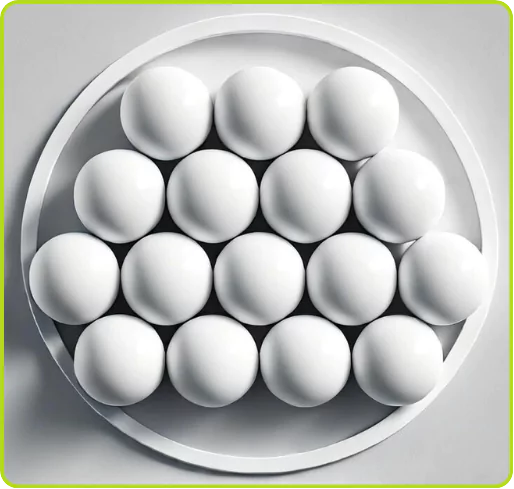Finding a gecko in your house can be puzzling. Is it just a nocturnal visitor from the rodent family or a harbinger of bad luck as some believe? While some superstitious folks think that having many geckos in the home might indicate negative energy, this is merely a myth without any scientific basis. In this article, we’ll explore how to get rid of geckos and address the real reasons they enter your home. We’ll also highlight the potential harms they pose, are they poisonous, what they eat, and how to handle them if they come into contact with humans.
This article is a part of our home cleaning series where you can learn how to Master Couch Cleaning, Clean Walls, Clean Your Kitchen, and Identify Small House Bugs.
GET IN TOUCH
Get the best Rodent Control Service In Riyadh
Why Do Geckos Enter Your Home
Geckos find their way into homes for various reasons unrelated to old beliefs about envy or negative energy. Understanding these reasons can help prevent their entry and effectively get rid of geckos.
1. Environmental Factors
Geckos are naturally drawn to environments that support their survival and reproductive needs, which include:
- Climate: Geckos thrive in warm environments. If you live in a warm climate like Saudi Arabia or a tropical place like Malaysia, your home is more likely to attract these creatures.
- Urban Expansion: As urban development increases, natural habitats for geckos shrink, pushing them into residential areas in search of shelter and food.
- Availability of Food and Water: Geckos feed on insects, so homes with abundant insects provide a rich food source. Water sources like leaking faucets and pet water bowls also attract them.
2. Factors Attracting Geckos from Outside to Inside
- Presence of Insects: Homes plagued by insects are prime targets for geckos.
- Food Scraps and Waste: Leftover food, crumbs, and garbage attract insects, which in turn attract geckos.
- Warmth and Shelter: Geckos seek warm places to regulate their body temperature, such as warm appliances and heaters. Homes offer many nooks and crannies for hiding.
- Light Sources: Lights attract insects, and geckos follow their prey.

Potential Harms of Geckos on Homes and Humans
Despite their benefits in controlling insect populations, geckos in the home can cause some damage and health issues. What happens if a gecko touches you? Do geckos have teeth? Do they bite? Are geckos poisonous? What are the damages to tools, clothes, furniture like couches and electrical wires? Can they spread diseases?
Health Concerns if a Gecko Touches You
If a gecko touches you, the health risk is possible but not catastrophic. Geckos are not poisonous to touch, and their bite does not cause serious health problems. However, geckos can carry harmful bacteria like Salmonella on their skin or in their feces, which can transfer to humans through direct contact or contamination of surfaces.
Most common house geckos are not poisonous and do not pose a threat to humans or pets. They do not have venom glands or fangs capable of injecting poison. Although there are very few poisonous gecko species in the world, they do not exist in areas where common house geckos are found.
Do Geckos Bite?
Generally, geckos are shy and non-aggressive toward humans. They prefer to avoid confrontation and flee when threatened. They usually bite only as a last resort defense mechanism if they are grabbed or cornered.
When Might a Gecko Bite?
- If a gecko feels threatened or is grabbed forcefully, it may bite to defend itself.
- Sometimes, a gecko might mistake fingers for insects and bite by accident.
- Larger gecko species can be more aggressive than smaller ones and may bite more readily.
What to Do if a Gecko Bites You?
- Wash the bite area thoroughly with soap and water.
- Apply an antiseptic to the bite.
- In rare cases, a gecko bite might cause swelling, redness, or itching. If you notice any of these symptoms or feel unwell, consult a doctor.
Damages Geckos Cause to Tools, Clothes, and Electrical Wires
While geckos themselves do not cause direct damage to tools, clothes, or electrical wires, their droppings can be a source of nuisance and potential damage:
- Droppings: Geckos leave small, dark droppings that can stain walls, furniture, and floors, causing unsightly blemishes.
- Odor: Gecko droppings can emit a foul odor, especially if they accumulate in hard-to-reach areas.
- Corrosion: The acidic nature of gecko droppings can corrode electrical wires and metal components over time, potentially leading to electrical malfunctions or short circuits.
- Fire Hazard: In rare cases, the buildup of dry gecko droppings on electrical wires can pose a fire risk, particularly if the wires are old or damaged.
Preventing Gecko Damage
- Regularly clean your home, focusing on areas where geckos are commonly found.
- Fix any leaks in faucets or pipes, as they may attract geckos.
- Eliminate insects in the home, as they are a food source for geckos.
- Regularly inspect electrical wires for signs of corrosion or damage.
Do Geckos Spread Diseases?
While geckos can carry harmful bacteria like Salmonella, there is no definitive scientific evidence that they are a major carrier of diseases that affect humans. However, their droppings can be a source of contamination, especially if they come into contact with food or surfaces used for food preparation. Potential harmful microbes in gecko droppings include:
- Salmonella: Bacteria that can cause food poisoning, with symptoms like diarrhea, fever, and stomach cramps.
- Escherichia coli (E. coli): Another bacteria that can cause food poisoning, with symptoms like bloody diarrhea, stomach pain, and fever.
Effective Ways to Get Rid of Geckos
If you’re struggling with geckos in your home and want to get rid of them, here are some effective and safe methods to consider:
1- Using Pesticides and Insecticides
There are many pesticides and insecticides designed specifically to get rid of geckos available in the market. Some of these include:
- Ortho Snake B Gon: Available on Amazon for SAR 300.
- Colton’s Repellent: Available on Amazon for SAR 416.
- Herbal Strategi: Available on Amazon for SAR 75.
Spray these insecticides in areas where geckos are commonly found, such as corners, cracks, and dark places. However, be cautious when using these chemicals and follow safety instructions to avoid any health hazards.
2- Using Wormwood (Artemisia) to Repel Geckos
Wormwood is a natural herb used to repel geckos and other insects. You can easily purchase it from markets and herbalists. Here’s how to use it:
- Place dried wormwood leaves in small bags and hang them in areas where geckos are found.
- Sprinkle wormwood powder in corners and cracks. Its pungent smell will deter geckos and keep them away.
3- Ultrasonic Devices to Repel Geckos
There are ultrasonic devices available that emit specific frequencies that irritate geckos, affecting their hearing and nervous system, prompting them to leave. These devices do not harm humans and can be purchased and placed in areas where geckos are common. For example: Ultrasonic Pest Repeller is Available on Amazon for SAR 100.

4- Using Eggshells or Naphthalene Balls
Geckos are repulsed by the smell and shape of eggshells and the pungent odor of naphthalene balls. Geckos think eggshells are a predator and run away from them. You can place broken eggshells or naphthalene balls in places where geckos are, which may help them stay away.
What are naphthalene balls?
Naphthalene balls are made up of naphthalene or paradichlorobenzene, both of which are chemical compounds with a strong, pungent odor. The properties of naphthalene balls include the following:
- Pungent odor: Naphthalene balls have a strong, gasoline-like odor, which is what makes them effective at repelling geckos.
- Gradual evaporation: Naphthalene balls go from solid to gaseous slowly, making them effective for a long time.
- Uses: Mainly used to protect stored clothes and fabrics from moths and other insects. They can be placed in closets, drawers, storage bins and corners of the house to repel geckos.
- Health warnings: Naphthalene balls should be used with caution as continuous inhalation or ingestion of their vapors may be harmful to health. Ventilate the area well when using them and avoid placing them within reach of children and pets.

Naphthalene balls are an effective way to repel insects and some reptiles, but they must be used with caution and know the health warnings related to them:
- Avoid direct skin contact.
- Be careful not to inhale the vapors excessively.
- It is preferable to place them in closed containers or mesh bags to avoid spreading them widely.
5- Using Garlic and Onion to Repel Geckos
The pungent odor of garlic and onions is a natural gecko repellent. You can chop garlic and onions and put them in small bags and hang them in places where geckos are present, or you can spray garlic and onion juice diluted with water in corners and crevices.
6- Using Coffee and Tobacco Balls to Kill Geckos
You can make small balls of ground coffee and tobacco and place them in places where geckos are present. These balls attract hungry geckos and they eat them, killing them due to the toxic properties of tobacco, which contains nicotine, a substance that is toxic to many living things including reptiles.
How coffee and tobacco balls work:
- Attraction: The smell of ground coffee attracts hungry geckos.
- Eating: When a gecko eats these balls, the nicotine in tobacco enters its system.
- Poisoning: Nicotine is a neurotoxin. When a gecko ingests enough of this substance, its body is poisoned.
- Fatal effect: Nicotine poisoning can lead to paralysis of the gecko’s nervous system, eventually leading to death.
Important notes:
- Safety: Using tobacco can be dangerous if ingested by pets or children. These balls should be placed in places inaccessible to them.
- Allergies: Some people may be sensitive to the smell of tobacco. Therefore, make sure to use this method with caution and in well-ventilated areas.
7- Use adhesives to catch and expel Geckos
You can use adhesives such as duct tape or sticky traps to catch geckos. Place these materials in places where geckos are found, such as the corners of the kitchen and behind the refrigerator, and when the gecko sticks to them, you can kill it or take it out of the house and release it in a place far away from your home.
How to Prevent Geckos from Returning After Getting Rid of Them?
After successfully getting rid of geckos from your home, it’s crucial to take preventive measures to keep them from coming back. Here are some effective tips:
- Keep your home clean and regularly get rid of insects as they are a primary food source for geckos.
- Place strong-smelling substances like eggshells, mint, cloves, and hot pepper in areas where geckos are usually found.
- Clean up food scraps and crumbs on floors and surfaces, and dispose of garbage daily.
- Carefully inspect your home for any cracks or gaps in walls, doors, and windows. Seal these openings with sealant or cement to prevent geckos from entering.
- Fix any leaks in faucets and pipes and ensure there is no standing water in dishes or bowls.
- Maintain good ventilation in your home, especially in damp areas like bathrooms and kitchens.
- Plant natural gecko repellents like mint, basil, and lavender.
- Use help from some pets, like cats who are natural gecko hunters.
Additional Information About Geckos
Geckos are an integral part of our ecosystem. Whether you consider them a common household visitor or an unwelcome guest, understanding their nature, behavior, and habits can help in managing their presence.
Types of Common House Geckos
- Mediterranean House Gecko: Known for its gray or light brown color with dark spots on its back. Common in urban areas around the Mediterranean.
- Tropical House Gecko: Features a light brown or creamy color with dark stripes on its back. Found in tropical and subtropical regions.
- Moorish Gecko: Recognized by its gray or dark brown color with white or yellow spots. Found in North Africa and Southern Europe.
Gecko Behavior and Habits
- Nocturnal Creatures: Geckos are nocturnal and prefer to hunt and explore at night. During the day, they hide in dark, quiet places.
- Hiding Spots: Geckos like to hide in cracks and crevices in walls, floors, and ceilings, as well as behind furniture and electrical appliances.
Life Cycle and Reproduction
- Egg Laying: Female geckos lay eggs in warm, humid places, such as wall cracks or under furniture. The eggs hatch after several weeks, producing small geckos that resemble adults but are smaller.
- Growth: Young geckos grow quickly and reach sexual maturity within a few months.
FAQs About Geckos
Still have questions? We have compiled some frequently asked questions and answered them in detail.
What Is the Difference Between Geckos and Lizards?
While geckos and lizards belong to the same reptile order, they differ in several ways:
- Skin: Geckos have smooth, thin skin, while lizards have scales.
- Eyelids: Geckos have fixed eyelids and cannot close their eyes, while lizards have movable eyelids.
- Feet: Geckos have adhesive pads on their feet that help them climb smooth surfaces, while lizards have claws.
- Habitat: Geckos prefer urban areas and homes, while lizards prefer natural environments and avoid homes.
What does gecko poop look like?
Gecko feces are small and dark in color, usually black or dark brown. It may contain the remains of insects that the gecko feeds on.
What is the difference between a gecko and a rodent?
Geckos and rodents belong to different orders of reptiles:
- Geckos: Belongs to the order Scales, and is characterized by its small, slender body and soft skin.
- rodent: The gecko belongs to the order Lepidoptera, characterized by its large, strong body and skin covered with scales.
Geckos are a part of the biodiversity around us, and their presence in the home can be managed with the right understanding and techniques. By knowing their nature and behavior, you can effectively prevent and get rid of geckos from your home. Remember, maintaining cleanliness and eliminating sources of attraction are the best ways to prevent their unwanted presence.